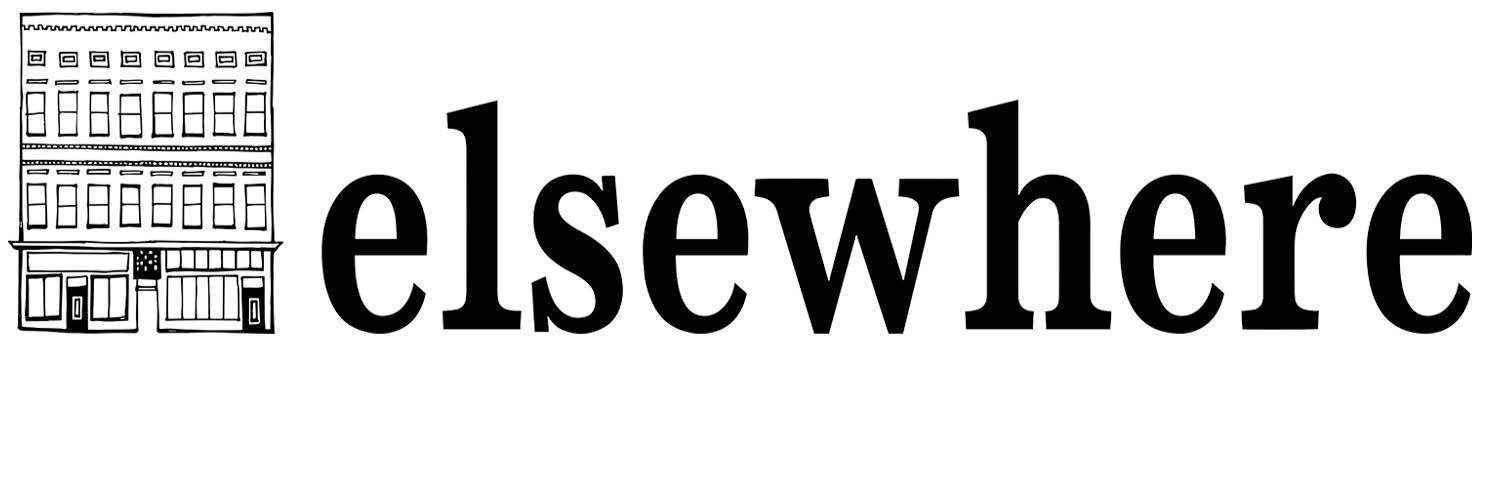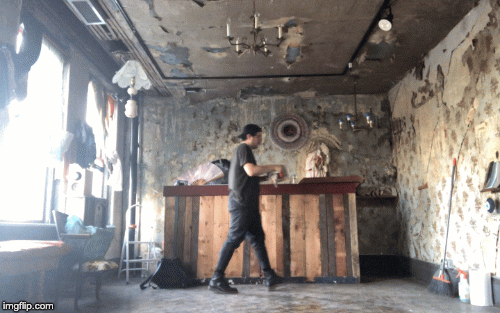PICTURES ELSEWHERE | “Arts are positional games and each time an artist is influenced he rewrites his art’s history a little.” (for Michael Baxandall and Sylvia Gray) | Josh T. Franco
As an artist with with an art history PhD, Franco makes the discipline itself his primary medium. For PICTURES ELSEWHERE, he considered the pivotal art historian Michael Baxandall's particular approach alongside his inheritance as an Elsewherian, the space and materials ultimately passed down from Sylvia Gray. This resulted in three new works: a performance for video, a book, and a live performance.
Project in Response To: Ghost Room, Southern Static, Action, Recalibration: no. 4, Revolving Spectrum, Receiver, Speakeasy (The Whisper)
Artist’s note: While in residence at Elsewhere Museum, I found myself drawn to the Ghost Room. Located on the third floor, it is an easy room to isolate in and spend time with your thoughts and the ghosts who visit. The ghosts are drawn by the Haint blue of the room's wallpaper, accents, and lighting. Sylvia Gray, proprietress of the building that eventually became Elsewhere, is definitely present. Art historian Michael Baxandall came along with me, I believe. I was deep in a re-read of his book Patterns of Intention before and during this residency. The work I ultimately made centered on conversations with Gray and Baxandall about art, legacy, and influence. As preparation for the work's installation and a performance, I spent days deeply cleaning every surface of the ghost room, de-installing and re-installing every object in the room, and laundering the window treatments and other textiles. At night, I rested in the tub-cum-lounge furniture and drank whisky with the ghosts.
Artist’s note: For 2 hours, 18 minutes, 17 seconds, I filmed myself deinstalling, cleaning, and reinstalling the works and surfaces in the Ghost Room. Timed to bridge sunset and dark, the viewer witnesses me shed the cliché monochrome black of the art historian in favor of the Haint blue light that becomes apparent as darkness settles. Wearing black is a tactic art historians use to avoid distracting from the images we discuss, to become visually insignificant in the presence of pictures. Haint blue is a Southern tradition intended to trick ghosts into thinking the roof of a porch is the sky, thereby passing through, if not avoiding, the residents. My donning of Haint blue in the form of light on my unclothed body declares rather than mutes my physical presence and invites Baxandall and Gray to pass through me. I cleaned the room deeply as a way to honor the gifts they left behind, and to prepare to visit with them. The video provides an opportunity to reflect on the art historian as a physical body.
To view the entire 2:18:17 video, email me: jtobiasfranco@gmail.com
Artist’s note: These 46 (20 pictured) works on paper follow a clear formula. Each depicts a trio of objects: one animal figure from Sylvia Gray's (Elsewhere's) vast toy collection, one gem or mineral from my personal collection, and one handwritten verb from art historian Michael Baxandall's list of ways in which later artists enact their agency on previous artists' legacies. The latter are listed in his foundational text Patterns of Intention: On the Historical Explanation of Pictures (published in 1985, the year I was born). These drawings are the manifestation of sustained meditation on Gray's and Baxandall's respective legacies side by side. This series also reflects my ongoing engagement with rupestrian art, the earliest marks left by humans' earliest ancestors on rock surfaces throughout the planet. The multi-layered colors on the surfaces supporting the pictographs were applied by laboriously working the paper sheets on a stone grinder.
Animal figure from Elsewhere’s collection. Acquired by Sylvia Gray.
Artist’s note: I consider the works on paper as a book. The pages are not bound together, but are held in place by a picture frame found in Elsewhere’s collection. Readers are welcome to remove the frame while reading the book. They do not need to maintain the pages in the order they found them.
Artist’s note: This series also reflects my ongoing engagement with ancient rupestrian art, the earliest marks left by humans' earliest ancestors on rock surfaces throughout the planet. The multi-layered colors and textures on the surfaces supporting the pictographs were applied by working the paper sheets on a sil bata (stone grinder). Each sheet was subsequently bathed and left to dry before drawing and writing took place. This process took place in the third floor workshop, my primary workstation during the residency.
Artist’s note: To activate the Ghost Room as a scriptorium, Elsewhere's public was invited to join me in a tequila-fueled conversation with the ghosts of Sylvia Gray and Michael Baxandall. For the live audience--who were welcomed to jump in--I introduced my collection of drawings as a loose leaf book and homage to Gray and Baxandall. I read and contemplated aloud while going page by page, intermittently taking shots and pouring them for the ghosts. I think we all discovered something about the meaning of art over time, and the work of artists and art historians.
permanent (inactive) installation



















